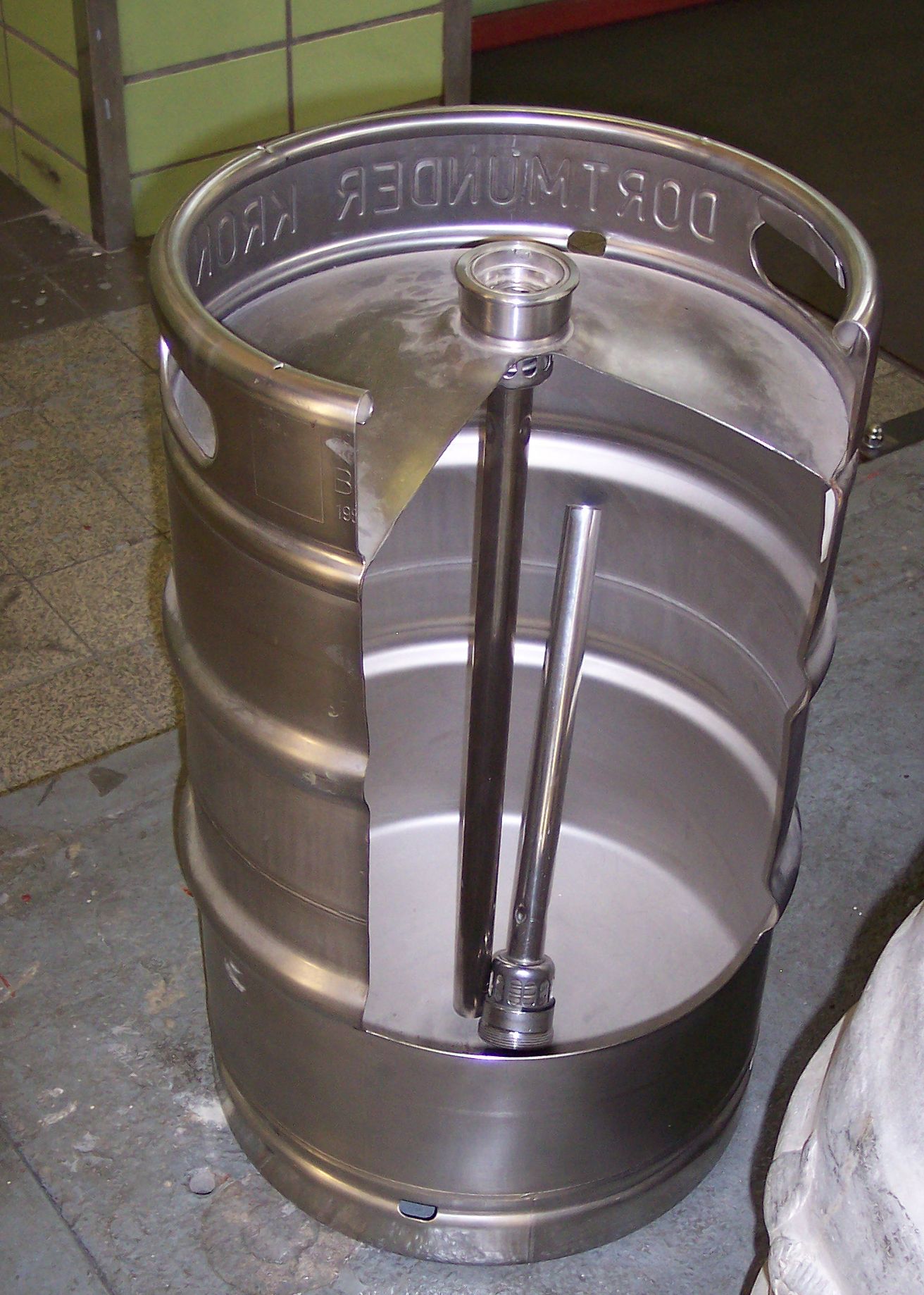Beer Brewing 101
- Introduction to Brewing
- Understanding Brewing Ingredients and Equipment
- Mashing and The Boil
- Clarification and Carbonation
- Recipe Formulation
- Troubleshooting Brews
- Beer Styles & Taste Profile
- Advanced Brewing Techniques
- Homebrewing Equipment
- Craft Beer Business Basics
Bottling & Kegging
Kegging Basics for Homebrewing

Receptacle for beer.
Kegging your homebrewed beer can be a convenient and rewarding method of storing and serving your beer. This article will introduce you to the basics of kegging, including why and when to keg, the types of kegs available, the role of CO2, and the process of filling and sealing kegs.
Why and When to Keg
Kegging is an excellent option for homebrewers who brew large batches of beer and want a quick and easy serving method. It eliminates the time-consuming process of cleaning, sanitizing, and filling individual bottles. Kegging also allows you to control the carbonation level of your beer more precisely, and it can be a more cost-effective method in the long run.
Types of Kegs
There are several types of kegs available for homebrewers:
-
Cornelius (Corny) Kegs: These are the most popular type of keg for homebrewers. They are easy to clean, fill, and dispense from. They come in two main types: ball lock and pin lock.
-
Mini Kegs: These are smaller, usually holding around 5 liters of beer. They are a good option for small batches or for taking your brew on the go.
-
Sixth Barrel Kegs: These are commercial-style kegs that hold approximately 5.16 gallons of beer. They are a good option if you want to serve your beer on draft at home.
The Role of CO2 in Kegging
CO2 plays a crucial role in the kegging process. It is used to pressurize the keg, which forces the beer out when the tap is opened. The pressure of the CO2 also carbonates the beer. By adjusting the pressure, you can control the level of carbonation in your beer.
Filling and Sealing Kegs
Filling a keg is a straightforward process. First, make sure your keg is clean and sanitized. Then, siphon your beer into the keg, being careful to minimize splashing to prevent oxidation. Once the keg is filled, you can attach the lid and apply CO2 pressure to seal the keg.
In conclusion, kegging is a great option for homebrewers looking for a convenient and efficient way to store and serve their beer. With a bit of practice, you can master the process and enjoy the benefits of kegging your homebrew.